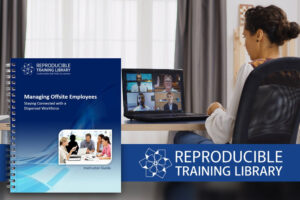Hybrid team complications
Why is being a teammate on a hybrid team more complicated?
There are a couple of reasons:
- Humans prefer to communicate by proximity. When we are in the same room as our teammates, communication is easy. We catch someone’s eye and are reminded of something we need to ask them. Maybe we have a question; we can look around and see who looks busy at this moment or stop by the manager’s desk. When we work apart, those who are out of sight are literally out of mind. It is easy to exclude teammates who aren’t right under your nose.
- Part of the proximity issue is the problem of exclusion. Need to partner with someone on a project? It’s easier to choose someone who is in the same location. It’s not that you have anything against the person in Denver; you just find it easier to work with the person at the next desk.
- For remote workers, it’s harder to be visible to your teammates. It takes more effort to be heard in those meetings where everyone else is in the conference room and you’re on a crackly speakerphone. You’d be happy to answer questions or be a resource to your teammates, but they don’t ask often because they don’t know what you’re doing and don’t want to “bother you.”
- Hybrid productivity is harder to track; how do you know your team is doing well when they are at a distance?
Three components to great hybrid teammates
In our book, “The Long-Distance Teammate, Stay Engaged and Connected While Working Anywhere,” we say there are three components to being a great teammate: Productivity, Proactivity, and Potential. While these were originally noted for teams that are remote from each other, the same rules apply to hybrid teams; you just need to adjust your thinking.
1. Hybrid productivity is more than getting your tasks done. It’s helping the team get its collective work done in a timely manner. Great teammates know that the job is more than what’s on your task list. This means you might have to swap priorities on a given day. Maybe you have to go into the office on that day if you’d rather not.
2. Proactivity often gets confused with “doing tasks without being asked.” That’s certainly part of it, but being a proactive team member means taking action in many ways. At a meeting, did a team member seem confused? You can wait for them to ask you a question or reach out. If you’re interested in a project, are you going to ask your manager for the opportunity, or hope they don’t just assign it to someone who’s in the office and under their nose? If something needs to be said at a meeting, do you hide in the shadows or speak up? Great teammates aren’t invisible, even if they’re not physically present.
3. Finally, Potential is taking a long view of things. Yes, you can put your head down and not bother reaching out to every member of your team. You can certainly keep things “all business” and not engage in social conversation. But over time, what will the impact of those behaviors be? You can be a great teammate, even if you’re not physically in the thick of the action. It does, though, take awareness, planning, and hard work. The benefits of flexible work and personal life/work balance make it worth the effort.
Intricacies of hybrid teammates
As we navigate the intricacies of hybrid productivity, it becomes clear that being a valuable teammate in this setting is not only achievable but essential. The traditional boundaries of proximity no longer define the reach of our contributions. To succeed, we must adapt and embrace a broader perspective on what it means to be a great teammate. Productivity, proactivity, and potential remain the cornerstones of excellence, whether our team is spread across different locations or working side by side. By acknowledging the unique challenges of hybrid teams and taking deliberate actions to overcome them, we can harness the benefits of flexible work arrangements while maintaining strong connections with our colleagues. In the end, the effort invested in becoming a standout teammate in the era of hybrid work is a worthy investment, promising enhanced personal growth and a more productive, harmonious team dynamic.
















